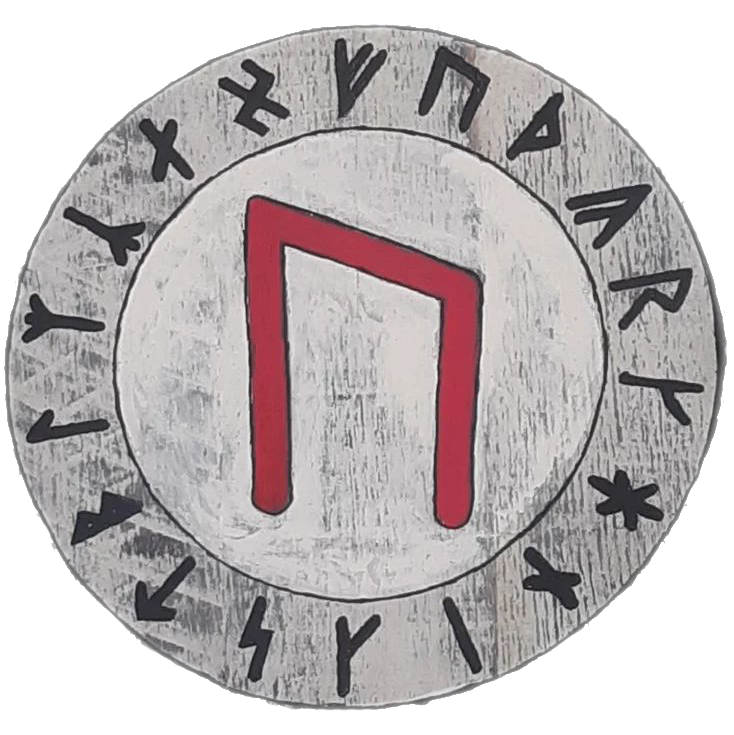
Ur: Primordial Light & Ancestral Fire
“Know thyself, and you shall know all!”
Rustic wall hanging, well suited for contemplative focus or creative visualization. This piece is hand krafted from reclaimed wood and hand painted with multiple layers and coats. Finished with polyurethane, while the back has been conditioned with fire.
The Armanen Runes were created by the Austrian mysticist Guido Von List after a vision in 1902, which opened List’s inner eye and revealed the “Secret of the Runes” to him. List described these runes in “Das Geheimnis der Runen” (The Secret of the Runes), which was published as an article in 1906 and as a standalone publication in 1908. The name comes from the “Armanen”, who List viewed as ancient Aryan priest-kings. According to List, the runes were hidden in the Poetic Edda (or Hávamál), specifically in stanzas 138 to 165, with stanzas 146 to 164 designated as the “Song of the Runes”. Von List quotes these stanzas, each followed by a brief interpretation and reflection on the particular syllable the rune stands for, and summed up by a motto for each rune.

The Armanen Futharkh runes are inspired by the Younger Futhark, though the names and pronunciations are more akin to the Anglo-Saxon Futhorc. In ancient times, the Armanen Futharkh was made up of sixteen symbols, but the currently existing Futharkh consists of 18 runes, in 3 rows of 6. The final two runes, Eh and Gibor, are derived from the Anglo-Saxon Eoh and Gyfu. Apart from these two runes and the placement of the Man rune, the order is identical to that of the Younger Futhark.
Here they are, as they appear in the Wikipedia entry about the Armanen Futharkh (link below):

Sources:
https://en.wikipedia.org/wiki/Armanen runes
https://pagan.fandom.com/wiki/Guido von List

Here are three forms of casting runes:
- The Single Rune Draw: This is the simplest form of rune casting. You draw a single rune from the bag and read its meaning. This method is often used for quick yes/no answers or to gain a quick insight into a situation.
- The Three Rune Spread: This method involves drawing three runes from the bag. The first rune represents the past, the second represents the present, and the third represents the future. This spread can provide a more detailed understanding of a situation.
- The Runic Cross: This is a more complex form of rune casting. It involves drawing six runes and placing them in a cross formation. The runes represent the past, present, future, what’s on your mind, your unconscious thoughts, and the final outcome. This spread can provide a comprehensive overview of a situation.
Remember, interpreting runes requires intuition and an understanding of the symbols. The Armanen Futhark, being a unique set of 18 runes introduced by Guido von List, has deep historical and cultural significance, so it’s always a good idea to spend some time studying the meanings of these runes before attempting to interpret them.

